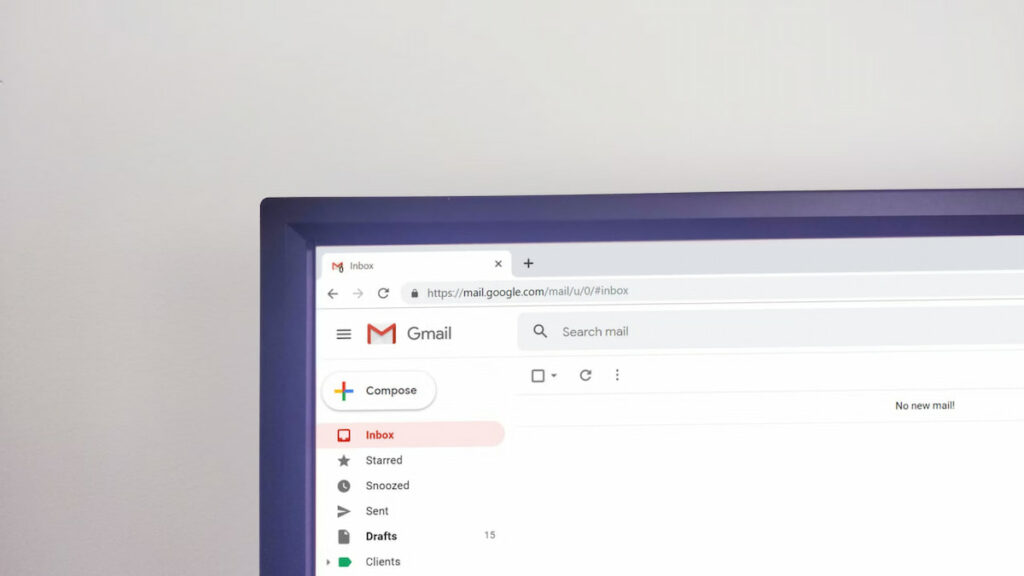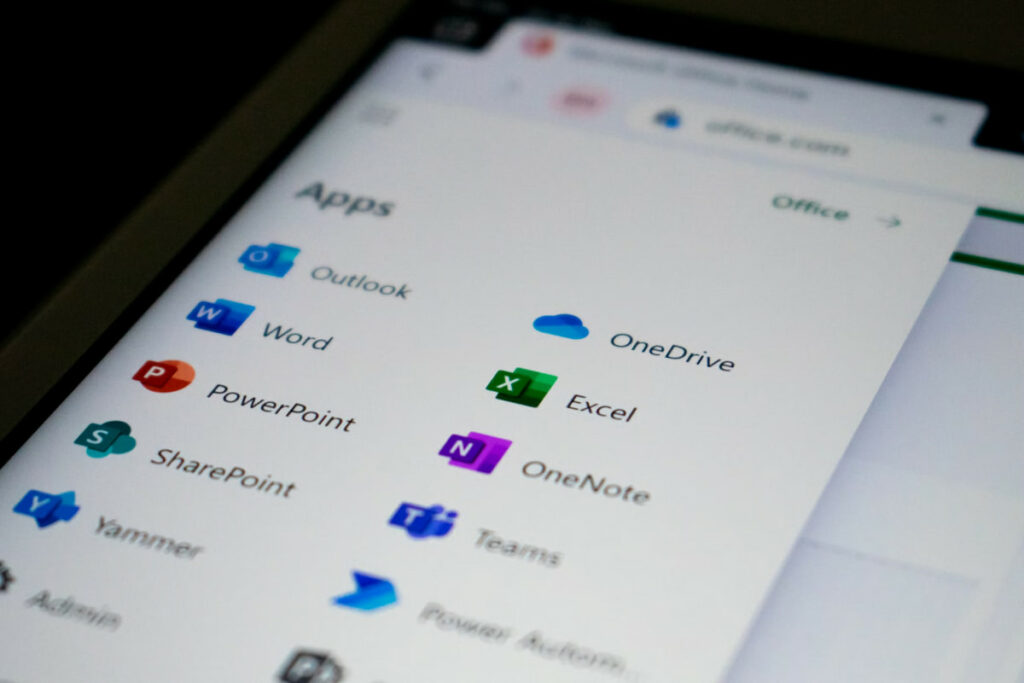The Top Email Security Software Solutions for 2024: Features and Comparisons
These days, email cyberattacks are stronger than ever. A wide range of businesses and organizations who rely on email communication daily should prioritize robust security measures. In this article, we’ll explore the essence of email protection software and overview the best solutions in 2024.
- Proofpoint Email Protection – Best for top-of-the-line threat protection;
- Barracuda Email Security Gateway – Best for integrated cloud-based solutions;
- Check Point Harmony Email & Collaboration – Best for comprehensive email security and incident response;
- Microsoft Defender for Office 365 – Best for cloud email security;
- Egress Intelligent Email Security – Best for preventing insider risk.
Common Email Cyberattacks
In today’s digital age, email security threats are constantly lurking to attack anyone’s corporation. E-communication is the primary way hackers access the company’s information, involving attacks like phishing, message compromise, and spam. It’s the most vulnerable channel of communication that can destroy a business overnight.
Phishing
The most frequent way to attack a business is phishing. Fraudulent users send emails that look legit, pretending to be from trusted places like banks, vendors, or even coworkers. Their goal is to trick corporate people into sharing private personal data, like passwords, credit card details, or login.
Computer Viruses
It’s the kind of malware that copies itself and spreads by altering other computer programs and adding their code. This can damage hardware, delete data, expose sensitive info, and waste time and resources. Many are spread through emails, activating when a user interacts with an infected message by clicking a link or downloading an attachment.
Unauthorized Access to Communications
Gmail and other popular messaging providers don’t fully encrypt your emails, which poses a significant risk for businesses. That means the content of the sent or inbox messages may become vulnerable to third parties. Most hackers find it easy to gain access to that information.
Business Email Compromise
BEC is another widely used scam where intruders pretend to be high-level business partners. These executors make great efforts to deceive employees into making fraudulent transactions or giving away confidential data. The most dangerous thing here is that they often spend time gathering information to craft compelling messages.
DDoS Attacks
In DDoS email attacks, the invading party uses many computers to send tons of email traffic to the target server. Typically, this is called creating a botnet. This makes it hard for real users to use their email accounts or send/receive emails.
Why Is Email Security Important?

Email security holds great importance as it safeguards individuals, businesses, and co-workers from cyber threats lurking within their inboxes. Being mindful of your data safety keeps malicious wrongdoers from scams, just as locking our doors keeps unwanted visitors out. It ensures that all the emails are private, confidential, and safe from cyberattacks that can disrupt our lives and businesses.
“The first step is to have a cybersecurity strategy that understands that there are some fundamental principles you have to adhere to, and you need to prepare for the fact that you will be breached,” once said Satya Nadella, CEO of Microsoft.
Investing in fully-featured email security is absolutely essential for any organization that wants to protect its valuable information. A robust system safeguards internal data and ensures the security of communications among colleagues, clients, and across different devices. Implementing tools to manage workflow and streamline processes can further enhance email security by minimizing human errors and ensuring proper protocols are followed. Email security software covers the following essential aspects:
- Securing gateways;
- Safeguarding email systems;
- Monitoring user behavior;
- Ensuring the safety of email content.
All in all, email security solutions are super important because they keep both incoming messages and connections to devices safe, stopping malware and viruses. By reducing risks and making security gateways work well, they keep confidential information safe and give peace of mind in today’s digital world.
Ensuring email security isn’t just about erecting digital walls; it’s a game of cyber chess, anticipating every move of the opponent. That’s where trace analytics comes into play – a powerful tool often overlooked in the grand scheme of cybersecurity.
This advanced technology enables organizations to gain a deep understanding of the origins and pathways taken by potentially malicious emails, empowering them to proactively identify and neutralize threats before they wreak havoc.
By harnessing the power of sophisticated algorithms and vast data repositories, trace analytics solutions untangle the intricate web of connections, meticulously tracing email journeys across multiple servers and networks.
Trending Features in Modern Email Protection Software
The email security gateway is the core principle of any protection software. It works to block cyberattacks, sift through unwanted emails, and safeguard private messages. Here are some common features present in email protection software.
Malware Detection and Antivirus Scanning
Any harmful software gets detected using techniques like signature-based detection, heuristic analysis, and machine learning. At the same time, antivirus software checks files, emails, and attachments for threat signatures and unusual behavior. This combination helps identify and prevent potential problems from harming the system.
These features integrated into email security solutions guarantee all-around defense against malicious activity via corporation e-communication. Through real-time email scanning, these systems proactively detect and eliminate security risks, including malware attachments and phishing efforts. Regular updates and interaction with threat intelligence further enhance these measures, providing robust cybersecurity for devices and data.
Anti-Phishing Protection

Scammers may request that you transfer funds to a different bank account and then give you detailed instructions on how to do it. Individuals who are not very familiar with the company may be tricked by this tactic. That especially comes true if the email appears to come from someone who seems legitimate, such as the actual business owner.
Sophisticated algorithms allow instant recognition and repelling scam attempts and fraudulent emails that trick consumers into divulging private information. They can outright block phishing messages from getting into a company’s email system in the first place. Basically, they allow businesses to stop attempted web-based assaults before they endanger the organization and its workers.
Spam Filtering
Inboxes are flooded with marketing notifications, which can clutter them with unnecessary messages. It may get even worse, including harmful links or trying to obtain sensitive information through phishing. A spam filter in a high-quality email security solution can manage this by sorting these messages into a separate folder.
By sorting out unwanted content, the likelihood of users being duped by scams or downloading harmful material is minimized. This process also enhances productivity by decluttering inboxes, ensuring timely visibility of essential message content. Furthermore, effective detection reduces the risk of being flagged for spam-related activities.
Email Encryption
The Transport Layer Security (TLS), by default, doesn’t secure emails, leading to the potential interception of sensitive information. Malware can exploit this vulnerability to continuously steal data. Therefore, organizations need to evaluate those risks and adopt enterprise email encryption for all communications.
Email encryption allows for verification of a message’s authenticity to stop it from being accessed by someone unintended or unauthorized. Its content becomes transformed from easily readable plain words into cryptic text. This is highly important when sending messages between coworkers and business partners.

Data Loss Prevention
Malicious actors or unauthorized individuals may cause email data loss. The first can steal or destroy data by breaching networks, and the latter may unintentionally or deliberately disclose sensitive information. Both these scenarios pose significant challenges for security teams.
Email data loss risks often involve human error despite security training efforts. Social engineering attacks target human vulnerabilities and are hard for traditional email security systems to tackle. Such incidents can lead to compromised sensitive data like:
- Payment card details;
- Login credentials;
- Innovative creations;
- Financial data;
- Medical records.
When vital information is found, this feature can perform several tasks. The list includes stopping the email, coding the content, telling administrators, or using data protection rules to stop leaks. This rigorous approach to valuable data helps companies follow the rules, safeguard ideas, and prevent breaches from malicious actions.
Incident Response Automation
This feature employs artificial intelligence and machine learning to detect and respond to security incidents in real time. Its automated nature allows for performing several tasks. These include rapid identification, analysis of severity, and immediate response actions such as quarantining malicious email subject lines or blocking harmful URLs.
The best characteristic of this feature is that it guarantees fast reactions, standardized processes, and scalability for high email loads. Thus, the business can benefit greatly. As a result, there is boosted email security, reduced incident impact, and strengthened cybersecurity against threats like phishing and malware.
Real-Time Threat Intelligence
This ensures ongoing collection, examination, and application of current information and understanding about cybersecurity risks. The process revolves around monitoring various sources. That includes network traffic, system logs, threat feeds, and others to detect and identify potential threats as they happen.
Advanced algorithms for analysis help a lot in this process. They translate insights into actionable alerts and response actions, enabling swift responses to minimize damages. In addition, they integrate with security tools for enhanced threat detection and cybersecurity efficiency.

Cloud-Based Management
One essential component of contemporary email security software solutions is cloud-based administration. There are various benefits associated with this approach. It includes the ability for enterprises to remotely oversee and control their email security setup from a cloud-based platform.
Its features, like compliant archiving and secure messaging with email encryption, are crucial for healthcare, finance, and law. This is because they all must adhere to strict data regulations. Furthermore, cloud email security enhances security by analyzing potentially dangerous attachments and preventing them from reaching inboxes.
Multi-Factor Authentication
This approach entails a multistep login procedure, requiring users to input additional information beyond a password. Besides the basic password, this can include scanning their fingerprint, responding to a unique question, or inputting a code. It significantly boosts security by adding several layers of protection, greatly minimizing the chances of fraudulent email access.
Many big-size companies that handle sensitive data can benefit greatly from this, including finance, healthcare, judicial, and government. MFA can offer assistance to the IT, educational, retail, and industrial sectors that handle private information and regulatory requirements. As a result, implementing MFA helps prevent data breaches and ensures compliance with applicable regulations.
Detailed Overview of the 5 Best Email Security Software Solutions in 2024
Numerous email security software solutions exist to cater to different unique requirements. To help you in your selection process, we have curated a compilation of leading options on the market. Within each review, we’ll delve into essential features, efficacy, deployment methods, pricing, and customer reviews.
Microsoft Defender for Office 365

This cloud-based option provides email filtering and investigation tools that can tackle the various threats encountered in e-communication. Microsoft Defender for Office 365 is designed to stop phishing, malware attacks through attachments, and unauthorized access to business accounts. This security service from Microsoft comes with filtering, hunting, fixing, and investigating features.
The prominent features of Defender for Office 365:
- Targets phishing emails, using mail flow rules to stop them from reaching inboxes and thwarting phishing attacks;
- Checks email attachments; if deemed harmful, users can’t interact with them, or policies may block the email;
- Watches over network-connected devices, identifying vulnerabilities to prevent exploits;
- Alerts users to sudden account changes and risky lateral movement, warning of exploitable identity issues;
- Pinpoints abnormal activities, like unauthorized access attempts, impossible travel patterns, odd downloads, and abnormal forwarding;
Microsoft Defender for Office 365 is a handy security tool that advantages individuals, small and medium-sized businesses, large enterprises, and schools. Its integration with Microsoft security tools and compatibility with SIEM and XDR systems help ensure data security.
Proofpoint Email Protection
The solution is available in on-premise or cloud versions for preventing unwanted, malicious, and impersonated emails. It offers detailed message search and control features, including outbound encryption and data loss prevention. In case of email disruptions, continuity features maintain business communication.
You can defend your brand, people, and data against current threats with Proofpoint’s Email Protection by doing the following:
- Identifying BEC or malware-free threats through machine learning;
- Advanced email routing capabilities;
- Comprehensive reporting and email tracing via Smart Search;
- Unified management of TAP, DLP, and Encryption features;
- Customizable inbox filtering for unwanted emails.
Proofpoint provides a robust and all-around defense against online threats, safeguarding your communications effectively. The tool’s ability to counter advanced cyber threats, especially the trickiest phishing and malware attacks, sets it apart. This makes it the preferred choice for robust protection against complex risks.
Check Point Harmony Email & Collaboration
Check Point’s unique and patented solution detects attacks that other email security solutions overlook. This tool is good at protecting your cloud email and collaboration systems from malware, ransomware, and phishing attempts. There are the following prominent features:
- Recognized as the top in breach prevention by NSS Labs;
- Offers complete protection for emails and collaborations;
- Rapidly delivers safe file versions to users;
- Quick installation and immediate threat detection;
- Enforces data leakage policies as required;
- Identifies and halts sensitive data sharing in emails and collaborations;
- Adds security layers to collaboration apps such as Slack and Microsoft Teams.
The solution provides a holistic approach to securing email communications. It enhances collaboration among team members by integrating with popular tools and ensuring secure file sharing. The platform also protects sensitive data across organizational endpoints and cloud environments, ensuring comprehensive security.
Barracuda Email Security Gateway
It serves as an email security gateway, managing and filtering all inbound and outbound email traffic. This tool guarantees to safeguard organizations from email-borne invasions and potential data leaks. This comprehensive email management solution offers message encryption and cloud-based email spooling in case of mail server unavailability.
- Barracuda uses AI to block various threats;
- Offers admin controls and visibility;
- Provides encryption, archiving, training, backup, and Zero Trust access;
- Filters emails effectively using AI and sandboxing;
- Blocks phishing and impersonation;
- Filters URLs and DNS for web security.
The solution functions as a solid protective shield for email systems, warding off spam, phishing attempts, malware, and data leaks. It successfully incorporates capabilities such as email encryption and advanced threat detection driven by AI. With its customizable settings, you can tailor configurations, ensuring compatibility with various setups.
Egress Intelligent Email Security
The Egress Intelligent Email Security platform helps companies deal with their trickiest cybersecurity problem: insider risk. Email is the top weak spot in any business. Thus, the developer created the only Human Layer Security platform that protects against email threats coming in and going out.
Egress Intelligent Email Security stands out with the following prominent capabilities:
- Blends intelligence and proactive defenses;
- Stops breaches before they happen with proactive strategies;
- Covers inbound threats other tools miss;
- Guards against scams and impersonation attacks;
- Blocks phishing attacks for safer accounts;
- Upholds integrity with strong security measures;
- Safeguard against accidental leaks.
Egress Protect is a security and encryption tool perfect for different businesses. The range includes healthcare, finance, and government industries. It locks up content and attachments both in transit and at rest. As a result, it offers high-quality protection against security risks and data breaches.
Comparison of the 5 Best Email Security Software Solutions in 2024
To make the final decision, take a look at the brief comparison chart below.
Essential Criteria | Microsoft Defender for Office 365 | ProofpointEmail Protection | Check Point Harmony Email & Collaboration | Barracuda Email Security Gateway | Egress Intelligent Email Security |
|---|---|---|---|---|---|
| Threat Detection | High | High | High | Medium | High |
| Email Encryption | AES-256 | RSA-2048 | AES-256 | AES-256 | AES-256 |
| Data Loss Prevention (DLP) | Yes | Yes | Yes | Yes | Yes |
| Integration Capabilities | Office 365, Exchange | Salesforce, G Suite | Office 365, Exchange | Office 365, Exchange | Office 365, Exchange |
| Multi-Factor Authentication (MFA) | Yes | Yes | Yes | Yes | Yes |
| Scalability | High | High | High | Medium | High |
| Pricing | $5.00 per user per month | $5.86 per user per month | $1.00 per feature | $2.66 per user per month | £90 per year (for personal or business) |
| Customer Reviews | 4.5 | 4.5 | 4.7 | 4.5 | 4.6 |
How to Choose the Right Email Protection Software

Keeping your business e-communication safe from online threats is crucial for a thriving company. With so many options on the market, picking one may be a challenging option. Study the following checklist to discover which email security solution you need to choose to secure your business communication:
- The initial focus should be identifying the current challenges and determining how to tackle them within your GRC strategy;
- When selecting an email security provider, consider the features and capabilities they provide;
- Compare the features and capabilities of various solutions to see how well they align with your needs and expectations;
- Consider how well the email security provider integrates with your existing systems and tools, ensuring compatibility and seamless workflow integration;
- Assess how well different solutions handle the most essential tasks, like filtering, encryption, and scanning;
- Take into account scalability, flexibility, and reliable support to meet your organization’s evolving needs;
- Consider cost-effectiveness and ROI, seeking transparent pricing and benefits in security, compliance, productivity, and reputation.
Picking the perfect email security software is vital to keeping your sensitive data safe and your business running smoothly. With so many sneaky threats in emails like phishing and malware, you really need strong protection. To choose the most suitable option, you need to contemplate your company’s goals, requirements, capabilities, and budget.
The above recommendations can help you choose wisely. Compare services based on features, compatibility, performance, and cost to find what fits your business best. In the end, you’ll get the most suitable solution for comprehensive email protection.
Conclusion

In the fast-changing digital world we live in today, keeping your business e-communication safe is super important. This rule is applicable for any company size, whether it’s a small or large one. The one common thing they share is the vulnerability when transmitting valuable information in emails.
Email cyberattacks can cause many problems by exposing proprietary information, such as personal data, financial details, and intellectual assets. Crooked attackers can impersonate users or send malicious content to contacts. This can lead to identity theft, financial collapse, and a ruined reputation.
According to Simpalm, a software development company, email security services are key to stopping cyberattacks. These tools make sure that a company’s private info stays safe and away from any bad actors out there. Establishing comprehensive email security will allow for peace of mind of your business’s valuable data and keep your coworkers protected.
In this guide, we’ve reviewed top-notch tools, broken down what makes each special, and made a comparison. So, you get some help in overviewing leading tools on the market and choose the one you like the most. As a result, your email security will be enhanced, leaving your business unshaken by any cyberattack.

